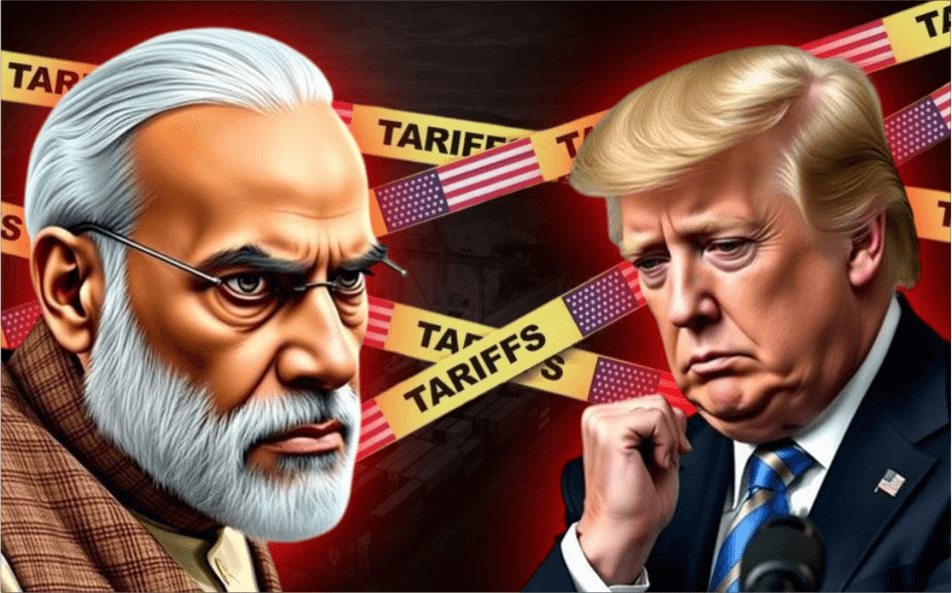US
Sat, Jan 03, 2026 | 02:18 AM IST
| Columbus | -7°C

The United Indian



India and the US are back in negotiations - and Peter Navarro’s voice is loud again. As trade talks restart, Navarro, former advisor under Donald Trump, has accused India of being slow on trade barriers and charging steep tariffs. It’s created ripples across economic circles. Are these tensions just posturing, or is something real about to shift?
Here’s what you need to know about US India trade talks, what’s new, what’s at stake, and why many are watching closely.
When talk of fresh us India trade talks hit the headlines, Navarro didn’t hold back. He’s labelling India’s tariffs some of the highest among major economies, claiming they hurt US exporters. He’s called on India to lower those barriers as a show of good faith. He even mentioned India must “come to the table”-that phrase has become shorthand for pressure from Washington to make concrete changes in India US trade relations.
He’s also zeroed in on India’s imports of Russian oil, suggesting that those purchases are part of the problem. Navarro says that unless India changes its policies, some US tariffs on India may stay or even get worse.
Because this isn’t just about arguments. It’s about things like:
From India’s side, there are reasons for caution. Prime Minister Narendra Modi has promoted self-reliance and boosting Indian meet-local supply chains. Giving in too much could harm industries that depend on protected markets. But holding firm risks escalating us tariffs on India, which could hit exporters hard.
Navarro’s loud criticisms come during the Trump administration, and they reflect a broader push: that the US wants trade partners to lower tariffs, open markets, and align more with US strategic interests. Donald Trump has made this a priority, even while criticizing what he sees as unfair trade practices by India.
India, meanwhile, argues that its import policies, tariffs, and trade regulations are partly driven by necessity - to protect jobs, support small businesses, and manage trade imbalances. But Navarro sees India’s current stand as insufficient. To him, “India coming to the table” means doing more - not just promises, but action.
In US India trade talks, India is expected to resist certain demands. Some of the non-negotiables will probably include:
And all this is happening under the scrutiny of the Commerce Ministry India and Prime Minister Narendra Modi’s government, which must weigh both global pressure and domestic expectations.
Based on his recent comments, Navarro seems keen on:
Here are what could happen:
Which path depends on how much pressure India feels it can absorb without hurting its industries, and how much leverage the US is willing to use.
“India coming to the table” might sound diplomatic, maybe a little vague. But with Navarro talking loud, with US tariffs already in place, with Indian exporters reporting drops, something has shifted. India can’t ignore this - both because its global trade reputation is at stake and because its exporters are beginning to feel pain.
If the US India trade talks truly gain momentum, the coming weeks could define not just trade policy but how global power dynamics play out in an era where economic influence matters as much as military.
One of the biggest differences this time around in the US India trade talks is the moment they’re happening. The world economy feels shaky, supply chains are being redrawn, and both India and the US want to show that they can be trusted partners. For India, these discussions aren’t just about tariffs; they’re also about opening doors for more investments, boosting exports, and being taken seriously as a global economic force. For Washington, the worry is simple-making sure American businesses don’t get squeezed out of a market that’s growing faster than almost anywhere else.
But numbers only tell half the story. Politics at home shape what happens at the table. In Washington, Navarro and a couple of old Trump voices still matter. They keep saying that US tariffs on India and trade gaps are really about saving American jobs. Back in India, it’s a whole other story. Prime Minister Narendra Modi and the Commerce Ministry India have to think about farmers who don’t want cheap imports, small traders trying to stay afloat, and industries that feel safer behind some protection. That’s why the idea of cutting trade barriers isn’t just a policy line - it sparks arguments in Parliament and plenty of talk outside too.
This is what makes Navarro’s phrase, “India coming to the table,” so important. It’s not just about showing up to negotiate-it’s about whether India can find middle ground without giving up its leverage. The next stretch will show if the two sides can go beyond strong words and actually put fair solutions on paper.
For The United Indian
At The United Indian, we look at these talks as more than technical details. They’re a mirror of how nations juggle pride, pressure, and progress. When Navarro’s sharp words meet India’s vision of self-reliance, the outcome trickles down to everyday exporters, workers, and consumers. Our job is to cut through the noise so people see how global decisions translate into real changes at home.
1. Why are the US India trade talks back in the news?
Because the two sides are meeting again. The world economy is shaky, and both countries want to show they can work together. Navarro’s comments just made it louder.
2. What does “India coming to the table” really mean?
It’s Navarro’s way of saying India needs to drop tariffs and make trade easier. Basically, he wants India to show up ready to give something, not just talk.
3. How do politics affect these talks?
In the US, people link trade deficits to jobs, so it’s political fuel. In India, Prime Minister Narendra Modi and the Commerce Ministry India have to worry about farmers and small traders. So every step gets debated.
4. Why are trade barriers such a big issue?
The US calls them unfair, India calls them protection. Cutting them helps American exporters but makes Indian businesses nervous. That’s why it’s so sensitive.
5. What could happen next?
Could be a small deal, could be nothing at all. And if it goes bad, the US might slap on new tariffs, and India will hit back. Simple as that.
Everything you need to know
No FAQs available for this blog.
#weareunited
We respect your privacy. Unsubscribe at any time. Privacy Policy
Dec 19, 2025
TUI Staff
Dec 18, 2025
TUI Staff
Dec 15, 2025
TUI Staff
Dec 04, 2025
TUI Staff
Comments (0)
Be the first to comment!